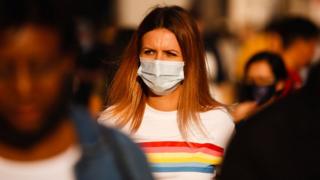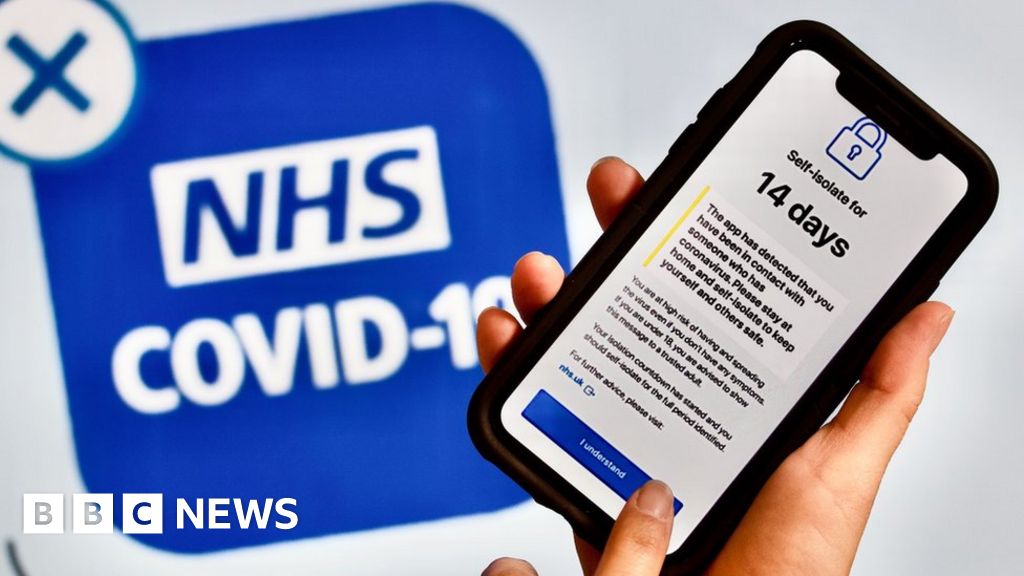 Image copyright
Getty Images
Image copyright
Getty Images
There have been nearly 400,000 confirmed cases of coronavirus so far in the UK and more than 40,000 people have died, government figures show.
However, these figures include only people who have died within 28 days of testing positive for coronavirus and other measures suggest the number of deaths is higher.
Find out how the pandemic has affected your area and how it compares with the national average.
If you can't see the look-up click here.
The postcode search has been updated to replace data for health boards in Scotland with data for local councils. In England, data for county councils has been replaced with data for district councils. Figures for boroughs and unitary authorities remain unchanged.
Cases and hospital admissions now rising
The government announced 4,322 new cases on Friday.
Recent days have seen the highest daily cases since May, prompting the reintroduction of restrictions on social gatherings across the UK.
Cases began edging up again in July - after falling significantly from their April peak - as lockdown restrictions imposed in March were eased.
The official number of cases during the peak in the UK underestimated the true level of infection at the time, as widespread testing was not as available until mid-May. Before then, testing was targeted - mainly being used in hospitals and other care settings.
An estimate from the Office for National Statistics (ONS) released on Friday suggested that roughly one in 900 people in England had coronavirus in the week ending 10 September. The figure for the previous week was one in 1,400.
Based on tests in households for current infection, the ONS survey is thought to give one of the most accurate pictures of whether or not new cases are increasing.
Meanwhile, the number of people admitted to hospital is also slowly rising, but remains well below levels seen earlier this year.
Where are the current hotspots?
There are several local hotspots in the UK that have seen a spike in cases in recent weeks.
The orange areas in the map below are those currently seeing the highest number of cases per 100,000 people.
Sorry, your browser cannot display this map
Restrictions are now being tightened in many of these areas across the UK.
Parts of the Midlands, Lancashire, Merseyside and West Yorkshire are the latest places in England to see extra measures announced.
You can see a full breakdown of the areas under extra restrictions and the types of rules in place here.
Small rise in daily deaths
While the number of new cases has been rising again recently, daily deaths have remained low - although there are now signs of a small increase.
The government announced 27 new deaths on Friday - 23 in England, one in Scotland, one in Wales and two in Northern Ireland.
In August, the government's death toll in England was reduced by 5,340 following a review of the way coronavirus deaths are counted.
New rules mean deaths anywhere in the UK are included in the coronavirus total only if they occurred within 28 days of a positive test. Previously in England, all deaths after a positive test were included.
England has seen the majority of UK deaths from Covid-19. Using the 28-day cut-off, there have been just over 37,000.
Overall death toll could be more than 60,000
When looking at the overall death toll from coronavirus, official figures count deaths in three different ways.
Government figures count people who tested positive for coronavirus and died within 28 days.
But there are two other measures.
The first includes all deaths where coronavirus was mentioned on the death certificate, even if the person had not been tested for the virus. The most recent figures suggest there had been nearly 57,000 deaths by 4 September.
The third method looks at all UK deaths over and above the number usually expected for the time of year - known as excess deaths. This measure shows the death toll was above 64,000 by 4 September.
There were just under 9,000 deaths registered in the UK in the week ending 4 September, 1,400 fewer than the five-year average.
These figures from the ONS also show that, for the first time since March, there were fewer than 100 deaths in a week in the UK mentioning Covid-19 on the death certificate.
The government has argued it is too soon to make definitive international comparisons but, analysis is beginning to suggest the UK has been one of the hardest hit countries.
What is the R number in the UK?
The "R number" is the average number of people an infected person will pass the disease on to.
If R is below one, then the number of people contracting the disease will fall; if it is above one, the number will grow.
On Friday, the government raised its estimate for the R number across the whole of the UK to between 1.1 and 1.4.
The estimate for England is between 1.2 and 1.4, while for Scotland it is between 1.1 and 1.4. The estimate for Wales is 0.7-1.0 and in Northern Ireland it is 1.2.
The government has said in the past that the R number is one of the most important factors in making policy decisions.

 5 years ago
954
5 years ago
954 

